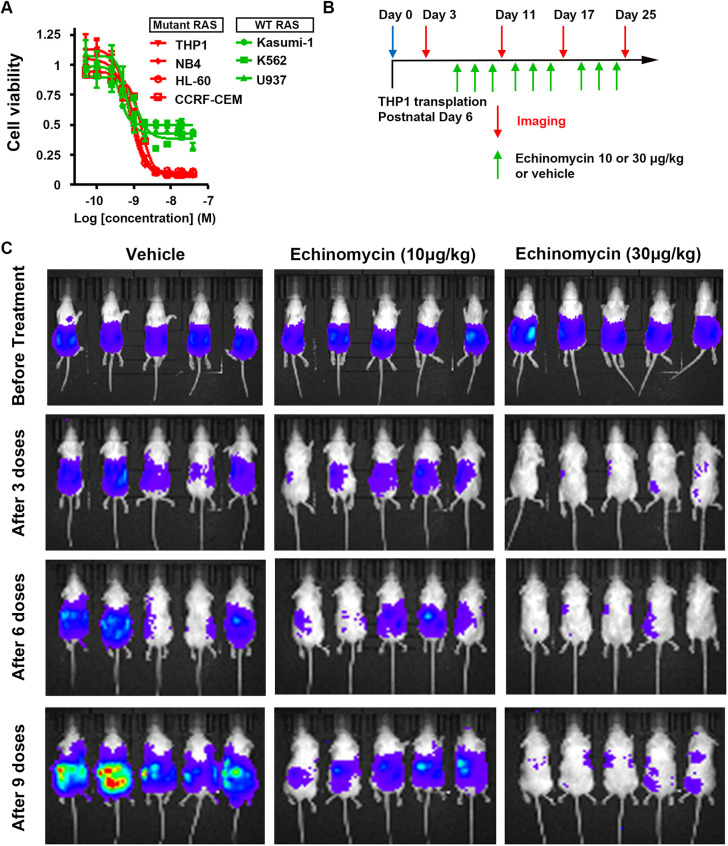Fig. 7.
Echinomycin reduces human leukemia cell viability and proliferation. (A) Cell viability of human leukemia cell lines following echinomycin treatment. Human leukemia cell lines were treated with echinomycin for 48 h at the indicated concentrations. Cell viability was then determined by incubating cells overnight with MTT tetrazolium salt (Sigma-Aldrich). Experiments were performed in triplicate. Red, leukemia cell lines carrying RAS mutations; green, leukemia cell lines in which RAS is not mutated. (B) Schematic illustration of THP1 cell (human leukemia cell line carrying NRASG12D) intrahepatic transplantation to generate mouse xenograft models, and time course of echinomycin treatments and diagnostic bioluminescence imaging to monitor THP1 cell transplant growth. (C) Bioluminescence imaging of mice engrafted with human THP1 leukemia cells bearing NRASG12D mutation. Mice were treated every other day with 10 μg/kg or 30 μg/kg echinomycin (as indicated) or vehicle control and were imaged after every third dose.

